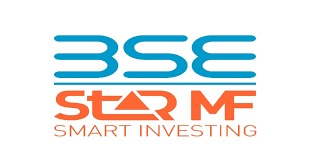NPS subscribers can claim two tax benefit under
“National Pension System” (NPS) means the contributory pension system whereby contributions from a subscriber are collected and accumulated in an individual pension account called PRAN using a system of points of presence, a central recordkeeping agency and pension funds as may be specified by regulations.

The Central Government has introduced the Defined Contribution based Pension System known as the National Pension System (NPS) replacing the existing system of Defined Benefit Pension with effect from January 01, 2004 vide its notification Ministry of Finance (Department of Economic Affairs) OM No 5/7/2003 PR Dt 22/12/2003.
income Tax Act allows benefits under NPS as per the following sections
There are two type choices availables Corporate employee & Citizen model

Maximum 75 percent in scheme Equity up to the age of 50. After 50, the upper limit of scheme E allocation starts reducing by 2.5 percent every year.
You can have a maximum of 100 percent in scheme G and C if you want at all times. The upper cap of scheme E is explained in the first point.
Under Auto choice, the subscribers need not take any asset allocation decisions. The investment allocation to various schemes is simply based on a pre-decided formula that the chosen life-cycle funds are based on. There are 3 Life Cycle Funds (LC) to choose from:

Aggressive Life Cycle Fund (LC75) – Best for aggressive investors who want high equity exposure. The schedule for the upper cap on equity is as follows: equity component is 75 percent up to age 35. Post that, it tapers down gradually to 55 percent at 40, 35 percent at 45, 20 percent at 50 to finally 15 percent by the age of 55.
Moderate Life Cycle Fund (LC50) – Best for investors who want medium equity exposure. The schedule for the upper cap on equity is as follows: equity component is 50 percent up to age 35. Post that, it tapers down gradually to 40 percent at 40, 30 percent at 45, 20 percent at 50 to finally 10 percent by the age of 55.
Conservative Life Cycle Fund (LC25) – Best for conservative investors who want small equity exposure. The schedule for the upper cap on equity is as follows: equity component is 25 percent up to age 35. Post that, it tapers down gradually to 20 percent at 40, 15 percent at 45, 10 percent at 50 to finally 5 percent by the age of 55.
A mutual fund is a pool of money managed by a professional Fund Manager.
It is a trust that collects money from a number of investors who share a common investment objective and invests the same in equities, bonds, money market instruments and/or other securities. And the income / gains generated from this collective investment is distributed proportionately amongst the investors after deducting applicable expenses and levies, by calculating a scheme’s “Net Asset Value” or NAV. Simply put, the money pooled in by a large number of investors is what makes up a Mutual Fund.
Here’s a simple way to understand the concept of a Mutual Fund Unit.
Let’s say that there is a box of 12 chocolates costing ₹40. Four friends decide to buy the same, but they have only ₹10 each and the shopkeeper only sells by the box. So the friends then decide to pool in ₹10 each and buy the box of 12 chocolates. Now based on their contribution, they each receive 3 chocolates or 3 units, if equated with Mutual Funds.
And how do you calculate the cost of one unit? Simply divide the total amount with the total number of chocolates: 40/12 = 3.33.
So if you were to multiply the number of units (3) with the cost per unit (3.33), you get the initial investment of ₹10.
This results in each friend being a unit holder in the box of chocolates that is collectively owned by all of them, with each person being a part owner of the box
Next, let us understand what is “Net Asset Value” or NAV. Just like an equity share has a traded price, a mutual fund unit has Net Asset Value per Unit. The NAV is the combined market value of the shares, bonds and securities held by a fund on any particular day (as reduced by permitted expenses and charges). NAV per Unit represents the market value of all the Units in a mutual fund scheme on a given day, net of all expenses and liabilities plus income accrued, divided by the outstanding number of Units in the scheme.
Lorem Ipsum is simply dummy text of the printing and typesetting industry. Lorem Ipsum has been the industry’s standard dummy text ever since the 1500s, when an unknown printer took a galley of type and scrambled it to make a type specimen book. It has survived not only five centuries, but also the leap into electronic typesetting, remaining essentially unchanged.
An open-end fund is a mutual fund scheme that is available for subscription and redemption on every business throughout the year, (akin to a savings bank account, wherein one may deposit and withdraw money every day). An open ended scheme is perpetual and does not have any maturity date.
A passively managed fund, by contrast, simply follows a market index, i.e., in a passive fund , the fund manager remains inactive or passive inasmuch as, he/she does not use his/her judgement or discretion to decide as to which stocks to buy/sell/hold , but simply replicates / tracks the scheme’s benchmark index in exactly the same proportion. Examples of Index funds are an Index Fund and all Exchange Traded Funds. In a passive fund, the fund manager’s task is to simply replicate the scheme’s benchmark index i.e., generate the same returns as the index, and not to out-perform the scheme’s bench mark.
Systematic Investment Plan (SIP) is an investment route offered by Mutual Funds wherein one can invest a fixed amount in a Mutual Fund scheme at regular intervals– say once a month or once a quarter, instead of making a lump-sum investment. The installment amount could be as little as INR 500 a month and is similar to a recurring deposit. It’s convenient as you can give your bank standing instructions to debit the amount every month.
SIP has been gaining popularity among Indian MF investors, as it helps in investing in a disciplined manner without worrying about market volatility and timing the market. Systematic Investment Plans offered by Mutual Funds are easily the best way to enter the world of

Disclaimer:- Mutual fund investments are subject to market risks. Please read the scheme information and other related documents carefully before investing. Past performance is not indicative of future returns. Please consider your specific investment requirements before choosing a fund, or designing a portfolio that suits your needs. FundsPru.com is owned by Altus Wealth & Insurance Marketing Pvt. Ltd. (with ARN code 116460) makes no warranties or representations, express or implied, on products offered through the platform. It accepts no liability for any damages or losses, however caused, in connection with the use of, or on the reliance of its product or related services. Terms and conditions of the website are applicable.
© Altus Wealth & Insurance Marketing Pvt. Ltd. ( CIN. - U93000RJ2018PTC061176, IRDA Licence No. - IMF186819200320210416 ) © 2018 All rights reserved